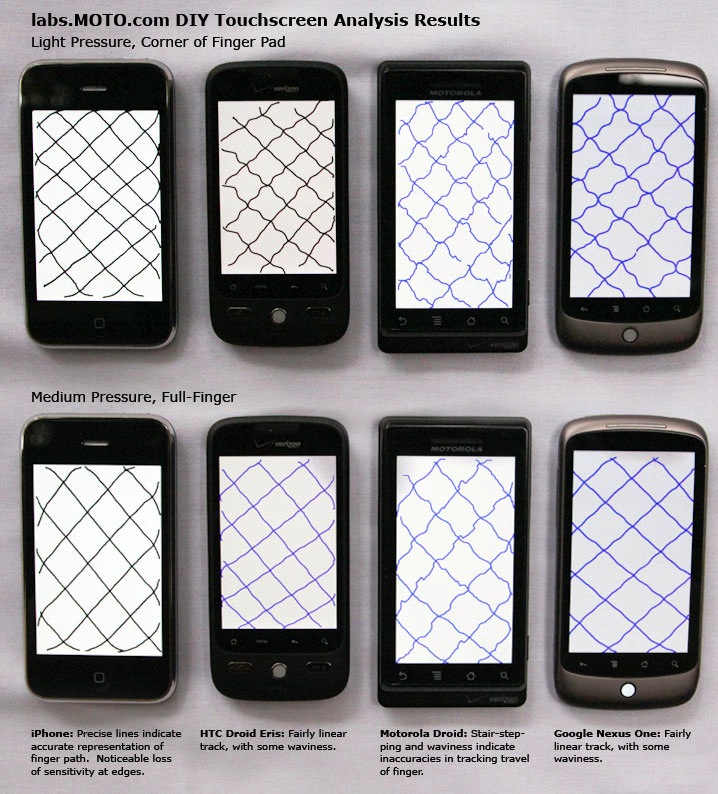Spearheaded by the iPhone, capacitive touchscreens are fast becoming the de-facto standard for smartphones, but the implementation of capacitive technology doesn’t always yield a consistent user experience across varying smartphone models.
It takes finesse to create a touchscreen system that’s pleasant to use, because touchscreens require seamless integration between hardware components, software algorithms, and user-interface design. If a manufacturer cuts corners or flubs any of the critical elements, the user’s experience with a touchscreen product is likely to suffer.
But how can we tell which user experience is best?
Well, thankfully we can defer to the Moto Development Group who recently endeavored to test the efficiency of capacitive touchscreens on a few of today’s more well-known and popular smartphones like the iPhone, HTC Droid Eris, Motorola Droid, and the newly released Nexus One phone from Google. By comparing the way each smartphone registers attempts at drawing straight lines with a finger, one can then gauge how responsive and accurate each corresponding capacitive touchscreen is. Below, check out a video of Moto conducting this fairly simple test.
The endgame: Put simply, straight lines are good and wavy lines are bad. From the looks of it, seems like the iPhone is the clearcut winner while the Motorola Droid seems to be the worst of the bunch.

via labs.moto





Mon, Jan 11, 2010
Featured, News